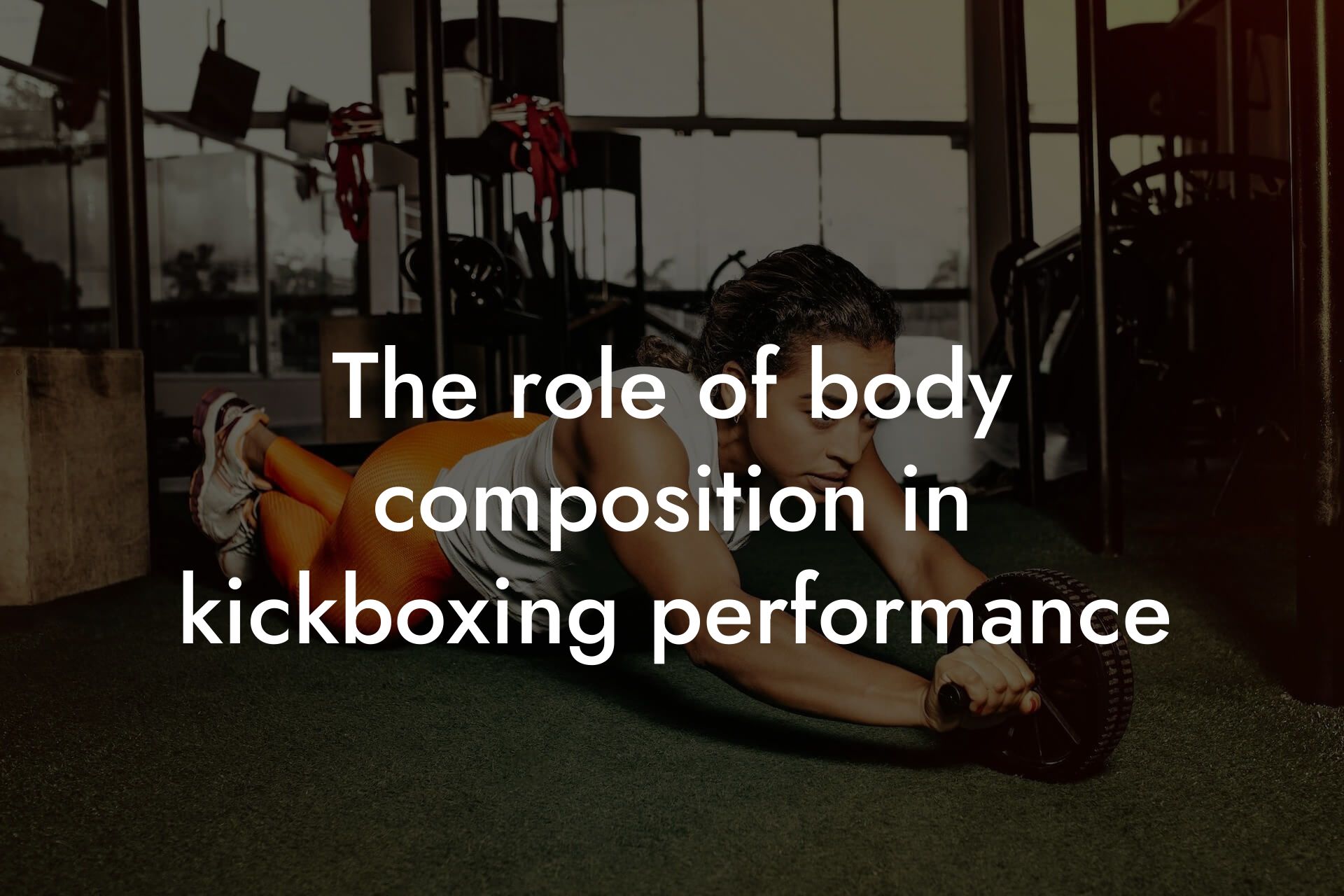As a kickboxer, you know that sparring sessions are an essential part of your training. They help you improve your technique, build endurance, and prepare for competitions. However, intense sparring can take a toll on your body, leaving you feeling fatigued, sore, and vulnerable to injury. Proper recovery strategies are crucial to help your body repair, rebuild, and adapt to the demands of kickboxing. In this article, we'll explore the importance of recovery and provide you with a comprehensive guide on how to recover effectively after sparring sessions.
Table of Contents
Why Recovery is Crucial for Kickboxers
Recovery is often overlooked, but it's a critical component of any training program. During intense exercise like sparring, your body undergoes significant physiological changes. Your muscles, tendons, and ligaments are subjected to micro-tears, inflammation, and oxidative stress. If you don't allow your body sufficient time to recover, you may experience decreased performance, increased risk of injury, and prolonged fatigue.
Adequate recovery enables your body to repair and adapt to the physical demands of kickboxing. It helps to:
- Replenish energy stores and rebuild muscle glycogen
- Reduce muscle soreness and inflammation
- Enhance muscle protein synthesis and repair
- Improve mental recovery and reduce stress
- Boost immune function and reduce illness
Immediate Post-Sparring Recovery Strategies
The first 30-60 minutes after sparring are critical for recovery. During this time, your body is most receptive to nutrient uptake and repair. Here are some immediate post-sparring recovery strategies:
1. Rehydrate with water or a sports drink to replenish lost fluids and electrolytes.
2. Consume a mix of carbohydrates and protein within 30-60 minutes to replenish energy stores and support muscle repair. Aim for a ratio of 3:1 or 4:1 carbohydrates to protein.
3. Perform gentle stretching or foam rolling to promote blood flow and reduce muscle tension.
4. Apply ice or heat to affected areas to reduce inflammation and promote recovery.
Short-Term Recovery Strategies (0-48 hours)
In the hours and days following sparring, your body continues to repair and adapt. Here are some short-term recovery strategies:
1. Prioritize sleep and aim for 7-9 hours of restful sleep to aid in physical and mental recovery.
2. Engage in low-intensity aerobic exercise, such as cycling or swimming, to promote blood flow and gentle movement.
3. Incorporate strength training exercises to target specific muscle groups and promote strength gains.
4. Use compression garments, such as tights or sleeves, to improve blood flow and reduce muscle soreness.
5. Consider using recovery tools, such as a NormaTec or a Hyperbaric Chamber, to enhance recovery.
Long-Term Recovery Strategies (48 hours+)
After the initial 48 hours, your body continues to adapt and rebuild. Here are some long-term recovery strategies:
1. Gradually increase training intensity and volume to continue challenging your body.
2. Incorporate active recovery techniques, such as yoga or Pilates, to improve flexibility and reduce muscle tension.
3. Focus on nutrition and meal planning to ensure adequate protein, carbohydrate, and healthy fat intake.
4. Prioritize mental recovery by engaging in relaxation techniques, such as meditation or deep breathing exercises.
5. Consider working with a coach or trainer to develop a periodized training plan that incorporates recovery phases.
Monitoring Recovery
Monitoring your recovery is crucial to ensure you're adapting to the demands of kickboxing. Here are some ways to track your recovery:
1. Use a heart rate variability (HRV) monitor to track changes in your autonomic nervous system.
2. Monitor your resting heart rate and sleep quality to gauge physical recovery.
3. Track your body weight, body fat percentage, and muscle mass using a DEXA scan or other body composition analysis tools.
4. Keep a training log to track your workouts, including intensity, volume, and perceived exertion.
5. Regularly assess your mental state, including mood, motivation, and overall well-being.
Common Recovery Mistakes
Even with the best intentions, it's easy to make mistakes that can hinder recovery. Here are some common recovery mistakes to avoid:
1. Insufficient sleep and rest
2. Inadequate nutrition and hydration
3. Overtraining and inadequate recovery time
4. Ignoring mental recovery and stress management
5. Failing to monitor recovery and adjust training accordingly
Recovery is a critical component of any kickboxing training program. By incorporating the strategies outlined in this article, you can optimize your recovery, improve performance, and reduce the risk of injury. Remember to prioritize sleep, nutrition, and mental recovery, and don't be afraid to take rest days or modify your training plan as needed. With a comprehensive recovery plan, you'll be able to train harder, fight stronger, and achieve your goals in the ring.
Get a Comprehensive Body Assessment with Tano Performance Group
At Tano Performance Group, we understand the importance of recovery and body composition analysis. Our state-of-the-art DEXA machine provides a comprehensive body assessment, including body fat percentage, muscle mass, and bone density. With this information, you can optimize your training and recovery strategies to achieve your goals. Contact us today to schedule your appointment and take your performance to the next level.
Frequently Asked Questions
What is the importance of recovery strategies for kickboxers after sparring sessions?
Recovery strategies are crucial for kickboxers after sparring sessions as they help to reduce muscle soreness, improve physical performance, and prevent injuries. Adequate recovery allows kickboxers to train at a higher intensity and frequency, leading to improved overall performance and achievement of their fitness goals.
What are the common mistakes kickboxers make after sparring sessions?
Common mistakes kickboxers make after sparring sessions include neglecting to stretch, failing to replenish energy stores, and not allowing adequate time for rest and recovery. These mistakes can lead to decreased performance, increased risk of injury, and prolonged recovery time.
How does nutrition play a role in recovery after sparring sessions?
Nutrition plays a critical role in recovery after sparring sessions. Consuming the right foods and nutrients helps to replenish energy stores, repair damaged tissues, and reduce muscle soreness. Kickboxers should focus on consuming a balanced diet that includes protein, complex carbohydrates, and healthy fats.
What are the best foods to eat after a sparring session?
The best foods to eat after a sparring session include bananas, dates, avocados, lean proteins, and complex carbohydrates such as brown rice and whole wheat bread. These foods provide essential nutrients and energy to aid in recovery.
How much water should kickboxers drink after a sparring session?
Kickboxers should aim to drink at least 16-20 ounces of water within 30 minutes of completing a sparring session. This helps to replenish lost fluids, reduce muscle soreness, and aid in recovery.
What is the importance of stretching after a sparring session?
Stretching after a sparring session is important as it helps to reduce muscle soreness, improve flexibility, and prevent injuries. Kickboxers should focus on stretching major muscle groups such as the legs, hips, and back.
How long should kickboxers stretch after a sparring session?
Kickboxers should aim to stretch for at least 10-15 minutes after a sparring session. This allows for adequate time to stretch all major muscle groups and aid in recovery.
What are some effective stretching exercises for kickboxers?
Effective stretching exercises for kickboxers include hamstring stretches, quadriceps stretches, hip flexor stretches, and lower back stretches. These exercises help to improve flexibility and reduce muscle soreness.
How does foam rolling aid in recovery after sparring sessions?
Foam rolling aids in recovery after sparring sessions by reducing muscle soreness, improving circulation, and breaking down adhesions in the muscles. Kickboxers should focus on foam rolling major muscle groups such as the legs, hips, and back.
What is the importance of rest and recovery after a sparring session?
Rest and recovery are crucial after a sparring session as they allow the body to repair and adapt to the physical demands of training. Adequate rest and recovery help to reduce muscle soreness, improve physical performance, and prevent injuries.
How much rest and recovery time do kickboxers need after a sparring session?
Kickboxers should aim to take at least 24-48 hours of rest and recovery time after a sparring session. This allows for adequate time for the body to repair and adapt to the physical demands of training.
What are some effective recovery techniques for kickboxers?
Effective recovery techniques for kickboxers include ice baths, compression garments, and massage therapy. These techniques help to reduce muscle soreness, improve circulation, and aid in recovery.
How does compression clothing aid in recovery after sparring sessions?
Compression clothing aids in recovery after sparring sessions by improving circulation, reducing muscle soreness, and providing support to the muscles. Kickboxers should wear compression clothing for at least 2-3 hours after a sparring session.
What is the importance of mental recovery after a sparring session?
Mental recovery is crucial after a sparring session as it allows kickboxers to recharge and refocus. Adequate mental recovery helps to reduce stress, improve mood, and enhance overall performance.
How can kickboxers aid in mental recovery after a sparring session?
Kickboxers can aid in mental recovery after a sparring session by engaging in relaxation techniques such as meditation, deep breathing, and visualization. These techniques help to reduce stress, improve mood, and enhance overall performance.
What are some common injuries kickboxers experience after sparring sessions?
Common injuries kickboxers experience after sparring sessions include bruises, cuts, and strains. These injuries can be prevented or minimized by wearing proper protective gear, warming up and cooling down properly, and engaging in adequate recovery strategies.
How can kickboxers prevent injuries after sparring sessions?
Kickboxers can prevent injuries after sparring sessions by wearing proper protective gear, warming up and cooling down properly, and engaging in adequate recovery strategies. Additionally, kickboxers should listen to their bodies and take regular breaks to avoid fatigue and prevent injuries.
What are some signs of overtraining for kickboxers?
Signs of overtraining for kickboxers include fatigue, decreased performance, and increased risk of injury. Kickboxers should be aware of these signs and take regular breaks to avoid overtraining and prevent injuries.
How can kickboxers avoid overtraining after sparring sessions?
Kickboxers can avoid overtraining after sparring sessions by listening to their bodies, taking regular breaks, and engaging in adequate recovery strategies. Additionally, kickboxers should adjust their training intensity and frequency based on their individual needs and goals.
What are some benefits of incorporating strength training into a kickboxing program?
Incorporating strength training into a kickboxing program can help to improve overall performance, increase power and speed, and reduce the risk of injury. Strength training also helps to improve bone density, which is essential for high-impact activities such as kickboxing.
How can kickboxers incorporate strength training into their program?
Kickboxers can incorporate strength training into their program by adding exercises such as squats, lunges, and deadlifts to their routine. These exercises help to improve overall strength, power, and speed, and can be modified to suit individual needs and goals.
What are some benefits of incorporating conditioning exercises into a kickboxing program?
Incorporating conditioning exercises into a kickboxing program can help to improve cardiovascular endurance, increase speed and agility, and enhance overall performance. Conditioning exercises also help to improve mental toughness and reduce the risk of injury.
How can kickboxers incorporate conditioning exercises into their program?
Kickboxers can incorporate conditioning exercises into their program by adding exercises such as burpees, jump rope, and agility drills to their routine. These exercises help to improve cardiovascular endurance, speed, and agility, and can be modified to suit individual needs and goals.
Here are some related articles you might love...
- Balancing strength, speed, and technique in martial arts
- How DEXA scans can benefit kickboxing athletes
- The role of body composition in kickboxing performance
- Strength and conditioning programs for kickboxing
- The role of kickboxing in cardiovascular health
- Nutrition tips for martial arts practitioners
- Reducing body fat for improved speed and agility in martial arts
- Bone density and its role in injury prevention in martial arts
- Maintaining muscle mass and flexibility in martial arts
Zak Faulkner
Zak Faulkner is a leading authority in the realm of physical health and body composition analysis, with over 15 years of experience helping professionals optimise their fitness and well-being. As one the experts behind Tano Performance Group, Zak has dedicated his career to providing in-depth, science-backed insights that empower clients to elevate their physical performance and overall health.
With extensive knowledge of DEXA technology, Zak specializes in delivering comprehensive body assessments that offer precise data on body fat, muscle mass, bone density, and overall physique. His expertise enables individuals to make informed decisions and achieve their fitness goals with accuracy and confidence. Zak’s approach is rooted in a deep understanding of human physiology, combined with a passion for helping clients unlock their full potential through personalised strategies.
Over the years, Zak has earned a reputation for his commitment to excellence, precision, and client-focused service. His guidance is trusted by top professionals who demand the best when it comes to their health. Whether advising on fitness programs, nutritional strategies, or long-term wellness plans, Zak Faulkner’s insights are a valuable resource for anyone serious about taking their health and fitness to the next level.
At Tano Performance Group, Zak continues to lead our Content Team revolutionising how professionals approach their physical health, offering unparalleled expertise that drives real results.




